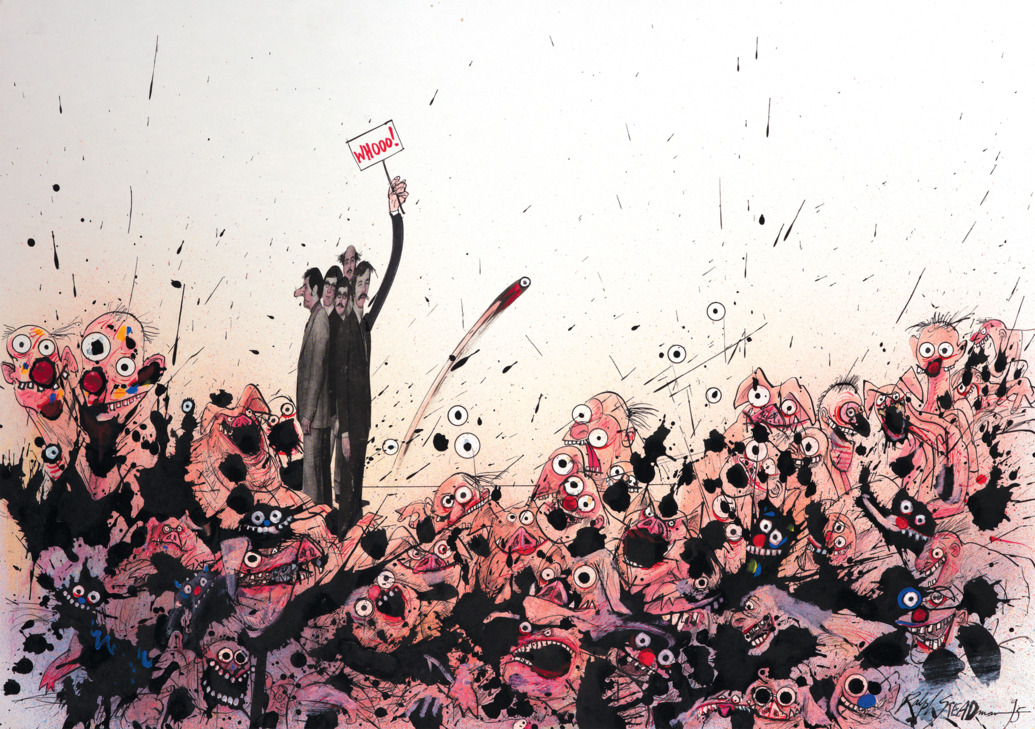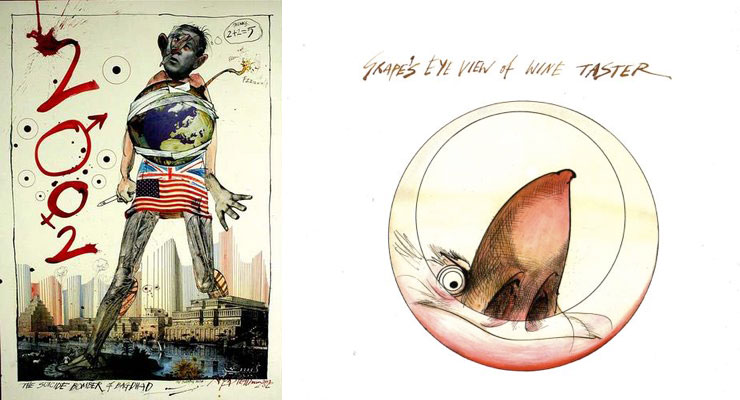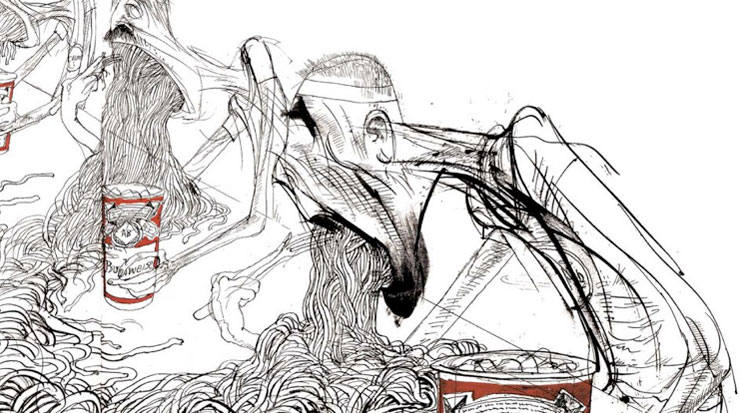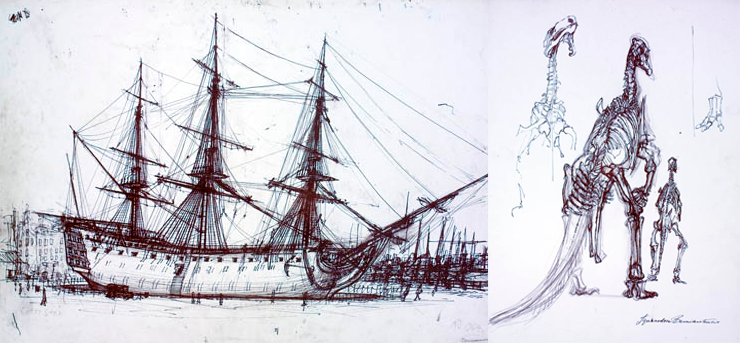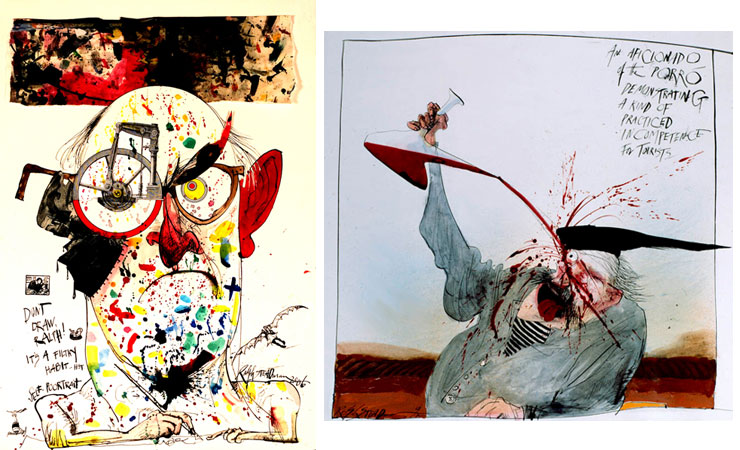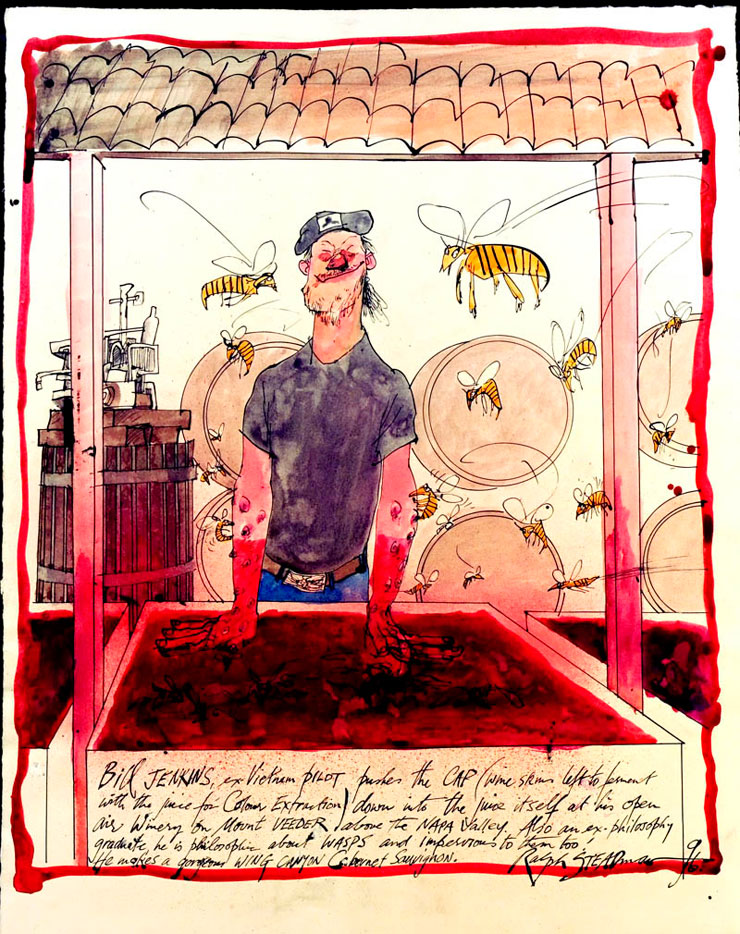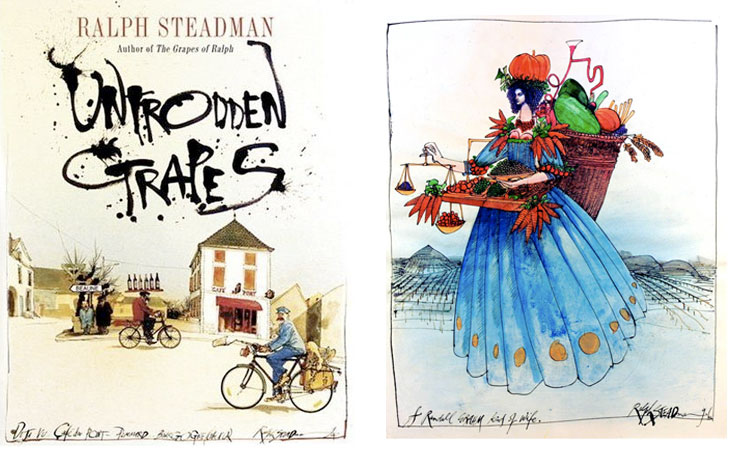Artist Profile – Ralph Steadman
Where does Ralph Steadman’s art truly find its home?
Is it in the courtrooms during the Richard Nixon impeachment trial? The Kentucky Derby where he first worked with Hunter S. Thompson and getting maced in the face for his efforts? Or does his work find a more suited environment within the pages of a book on wine tasting and vineyards?
Like many with a keen interest in illustration, Ralph Steadman is a particular hero of mine.
Not only a hero of American counter culture, he is celebrated by the mainstream and underground alike.
He seems as equally at home when illustrating fine wines as he is when using his ink splashes to pour scorn over the political class, expressing his disdain for a world that he views as essentially morally corrupt.
On one hand there is the art of Gonzo stuff that he undertook with Thompson which very much celebrated the anti-establishment mood at the time and then there’s the period where he chose to start illustrating grapes, vineyards and the culture of wine tasting. He’s certainly not the first artist to take on a broad range of subjects within his work but what makes him so good at it is his natural ability to do so and how comfortable the transition appears to be.
Politics and Wine Tasting
The energy and freedom in Steadman’s work seems to allow him to transcend many boundaries that remain stubbornly closed to most other illustrators. Throughout this post I’m going to try to gain a better understanding of how his work has become so widely accepted in so many different areas.
Portrait of a Noodle Nut
Despite being a self confessed Hunter S. Thompson freak, the first time I actually became aware of Ralph Steadman’s work would most likely have been the work that he done for the UK wine store “Oddbins”.
It stood out to me at the time as it certainly wasn’t your average set of wine posters. There was a unique energy to them. To paraphrase the good doctor of Gonzo himself, “they were wine posters not even considered for mass consumption”. Otherwise, we could just go with the fact that they were really unique illustrations for that genre and just leave it that.
Early Career
Steadman sold his first illustration to the Manchester Evening Chronicle in 1956. Despite this initial successful submission, he initially found it a challenge to carve out a career in illustration.
His original ambition to be published in London’s “Punch” magazine took over three years of failed submission’s before to this delight, Punch finally said yes to one of his drawings. Afterwards, his work would finally feature regularly in the publication.
Alongside his relentless perseverance at self-promotion, he also attended London College Printing and Graphic Arts College from 1961 to 1965 whilst simultaneously studying at East Ham Technical College.
Meeting Hunter
Viewed by many as his “big break”, Steadman was commisioned to cover the 1969 Kentucky Derby with the infamous writer and journalist Hunter S. Thompson.
Opting to avoid focusing on the race itself, Steadman and Hunter instead chose to document the depravity and ghastly nature of those who were attending the race.
“I really didn’t think we’d have anything more to do with one another. I thought he didn’t particularly like me, or my work.” said Steadman of his first meeting with the famous journalist.
In actual fact, the meeting was to prove to be a pivotal point in Ralph’s career as he struck up a forty year friendship with Thompson and would work with him on many occasions throughout that time, both of them simultaneously influencing each others work. Hunter S. Thompson himself would later refer to his work on the Kentucky Derby as “the birth of Gonzo journalism”.
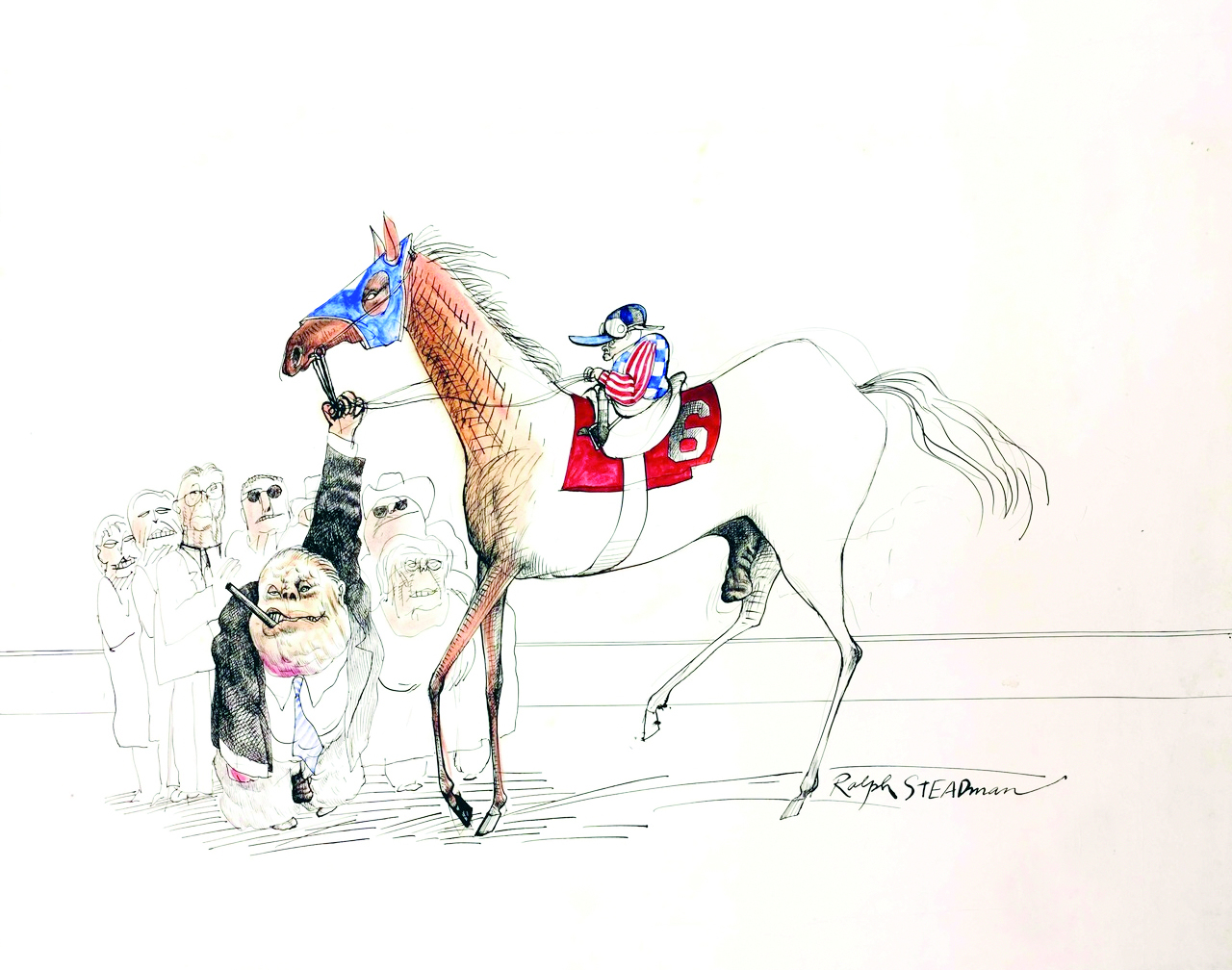
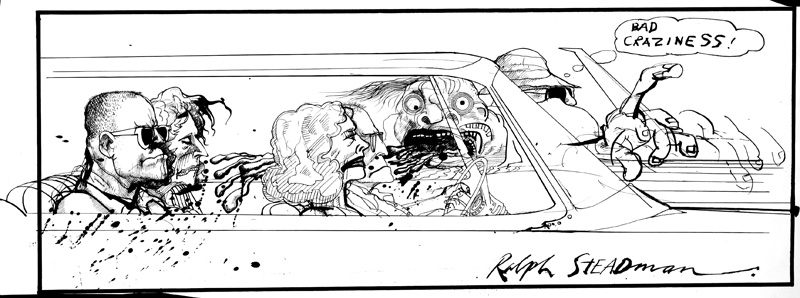

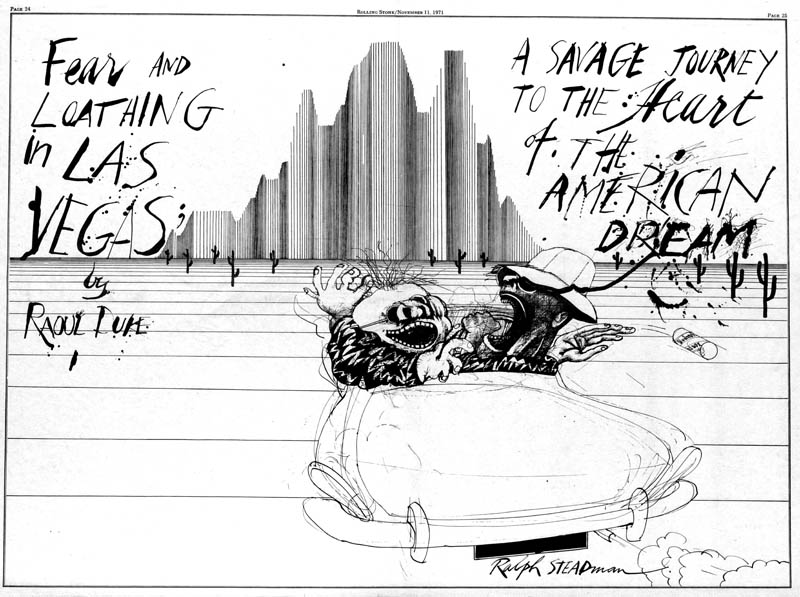
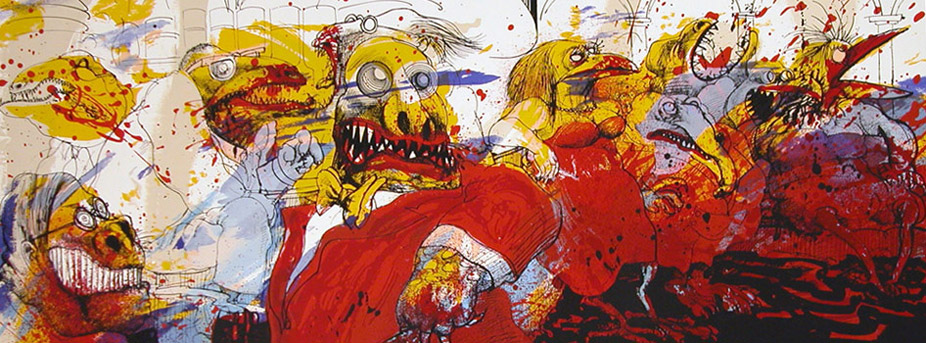
One way that Ralph Steadman does in fact appear closer to Hunter S. Thompson’s world of Gonzo journalism than some of his other more mainstream work is in the way that he is willing to put himself right in the middle of the situation that he is trying to capture, often to the point that he becomes the protagonist of the situation as opposed to a mere observer.
Ralph, Politics and the Political
It’s safe to say that Steadman finds little to admire in the average politician.
There’s is a quote from the artist somewhere out there that I’ve been trying to dig up where he speaks of how since childhood he has had a natural distrust of most if not all politician’s, speaking of the disdain he has always had for anybody that he suspected of dishonesty.
Steadman would wield his brush and pen in order to reflect this disdain to great effect.
“Cartooning meant more to me than just funny pictures”, said Steadman in his recent documentary “For No Good Reason”. He continues, “I really though if I ever learned to draw properly then I would try to change the world for the better”.
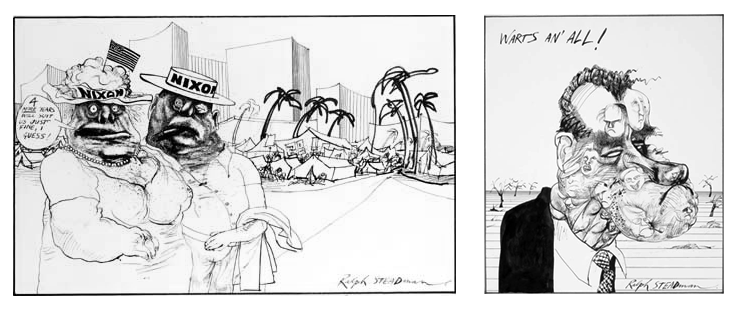
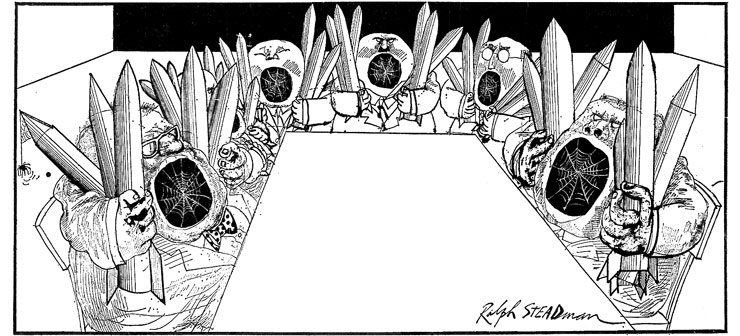

1980, It’s all about the Wine
In 1980, the artist was approached by the UK wine merchants Oddbins with a view to him illustrating their brochures. This was a partnership and a agreement that would last twelve years where he would spend much of his time travelling across the globe to experience a wide array of vineyards.
As a result of his work with Oddbins, Steadman was also inspired to create his own vineyard and to release a series of books chronicling his work in this field.
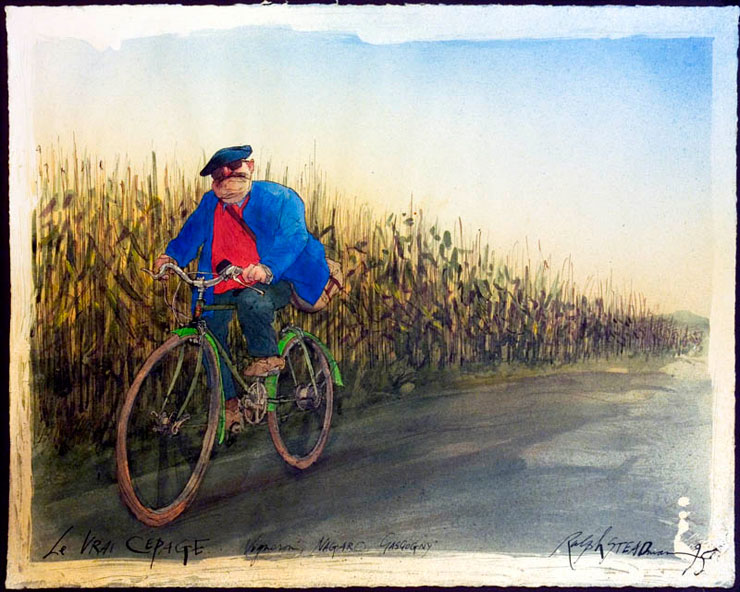
Ralph in his “grape era”
In Conclusion
At the start of this article I asked the question, “Where does Ralph Steadman’s art truly find its home?”
Despite the observations by many that on the outside Ralph Steadman appears as a down to earth friendly individual, by his own admission he has stated that underneath lies a more complex character, one that holds a very real anxiety and perhaps even anger at the state of the world today.
It is then very possible that the key for Ralph’s success is the way in which he is able to tap into that very unique and diverse side of his personality and apply it to his work.
The energy that is prevalent throughout his work is also perhaps a reflection of his commitment to live in the moment as he puts his pen/brush to paper.
It’s almost as if by suspending his conscious intentions he is able to tap into a more subconscious state which seems more honest and genuine which is possibly what the viewer responds to in his work and not his ability to fit seamlessly into one exclusive genre.
Steadman’s talent and indeed his voice is most likely far too valuable to be pigeon holed in to one particular niche.
Watching footage of him at work, he seems like he is walking a tightrope between making a mistake and creating a real moment of magic. Perhaps it is his ability to navigate this path that holds the key to his genius.
See more at ralphsteadmanartcollection.com or ralphsteadman.com
Wow! In searching out that last link I just realised that he has himself a new website. I’m off to take a look. You should to!

